Statements) : The water pipes during winter are wrapped with gunny bags or straw.Explanation (E) : Due to this wrapping, the temperature ofwater within the pipes does not fall below 0∘ C.
Only statement (S) is correct
Statement (S) and explanation (E) are both incorrect
Statement (S) is correct but explanation (E) is incorrect
Statement (S) and explanation (E) are both correct
Step by step video & image solution for Statements) : The water pipes during winter are wrapped with gunny bags or straw.Explanation (E) : Due to this wrapping, the temperature ofwater within the pipes does not fall below 0^(@) C. by Chemistry experts to help you in doubts & scoring excellent marks in Class 6 exams.
Related Playlists
Knowledge Check
- Question 1 - Select One
A 500 g teapot and an insulated thermos are in a 20∘C room. The teapot is filled with 1000 g of the boiling water. 12 tea bags are then placed into the teapot. The brewed tea is allowed to cool to 80∘C, then 250 g of the tea is poured from the teapot into the thermos. The teapot is then kept on an insulated warmer that transfers 500 cal/min to the tea. Assume that the specific heat of brewed tea is the same as that of pure water, and that the tea bags have a very small mass compared to that of the water, and a negligible effect on the temperature. The specific heat of teapot is 0.17J/g K and that of water is 4.18J/g K. The entire procedure is done under atmospheric pressure. There are 4.18 J in one calorie.
After the tea is added to the thermos, the temperature of the liquid quickly falls from 80∘C to 75∘C as it reaches thermal equilibrium with the thermos flask. What is the heat capacity of the thermos?A9.5J/KB14J/kC95J/KD878J/K - Question 1 - Select One
Statement Boiling point of water is 100∘C although water boils below 100∘C on mountains.
Explanation Boiling point of a liquid is the temperature at which V.P. of liquid becomes equal to 1atm.AS is correct but E is wrong.BS is wrong but E is correct.CBoth S and E are correct and E is correct explanation of S.DBoth S and E are correct but E is not correct explanation of S. - Question 1 - Select One
Which of the following statements are incorrect statements for acid rain (A) it corrodes water pipes (B) it is not harmful for trees and plants (C) it does not cause breathing problem in human being and animals (D) it damages building and other structures made of stone or metal
AA,BBB,CCA,CDB,D - Question 1 - Select One
Figure shows an electrical calorimeter to determine specific heat capacity of an unknown liquid, First of all, the mass of empty calorimeter (a copper container) is measured and suppose it is m1. Then the unknown liquid is poured in it. Now the combined mass of calorimeter+liquid system is measured and let it be m2. So the mass of liquid is (m2−m1). Initially both were at room temperature (θ0).
Now a heater is immeresed in if for time interval t. The voltage drop across the heater is V and current passing through it is I. Due to heat supplied, the temperature of both the liquid and calorimeter will rise simultaneously. After tsec, heater was switched off, and final temperature is θr. If there is no heat loss to surroundings. Heat supplied by the heater=Heat absorbed by the liquid+heat absorbed by the calorimeter (VI)t=(m2−m1)S1(θf−θ0)+m1Sc(θf−θ0)
The specific heat of the liquid S1=(VI)tθf−θ0−m1Sc(m2−m1)

Radiation correction: There can be heat loss to environment. To compensate this loss, a correction is introduced.
Let the heater was on for tsec, and then it is switched off. Now the temperature of the mixture falls due to heat loss to environment. The temperature of the mixture is measured t/2sec. after switching off. Let the fall in temperature during this time is ɛ
Now the corrected final temperature is taken as θf=θf+ɛ
In this experiment voltage across the heater is 100.0V and current is 10.0A, and heater was switched on for t=700.0sec. Initially all elements were at room temperature θ∘=10.0∘C and final temperature was measured as θf=73.0∘C.
Mass of empty calorimeter ws 1.0kg and the combined mass of calorimeter + liquid is 3.0kg. The specific heat capacity of the calorimeter =3.0×103J/kg∘C. The falls in temperature 350 second after switching off the heater was 7.0∘C. Find the specific heat capacity of the unknown liquid in proper significant figures.A3.5×103J/kg∘CB3.50×103J/kg∘CC4.0×103J/kg∘CD3.500×103J/kg∘C - Question 1 - Select One
Figure shows an electrical calorimeter to determine specific heat capacity of an unknown liquid, First of all, the mass of empty calorimeter (a copper container) is measured and suppose it is m1. Then the unknown liquid is poured in it. Now the combined mass of calorimeter+liquid system is measured and let it be m2. So the mass of liquid is (m2−m1). Initially both were at room temperature (θ0).
Now a heater is immeresed in if for time interval t. The voltage drop across the heater is V and current passing through it is I. Due to heat supplied, the temperature of both the liquid and calorimeter will rise simultaneously. After tsec, heater was switched off, and final temperature is θr. If there is no heat loss to surroundings. Heat supplied by the heater=Heat absorbed by the liquid+heat absorbed by the calorimeter (VI)t=(m2−m1)S1(θf−θ0)+m1Sc(θf−θ0)
The specific heat of the liquid S1=(VI)tθf−θ0−m1Sc(m2−m1)
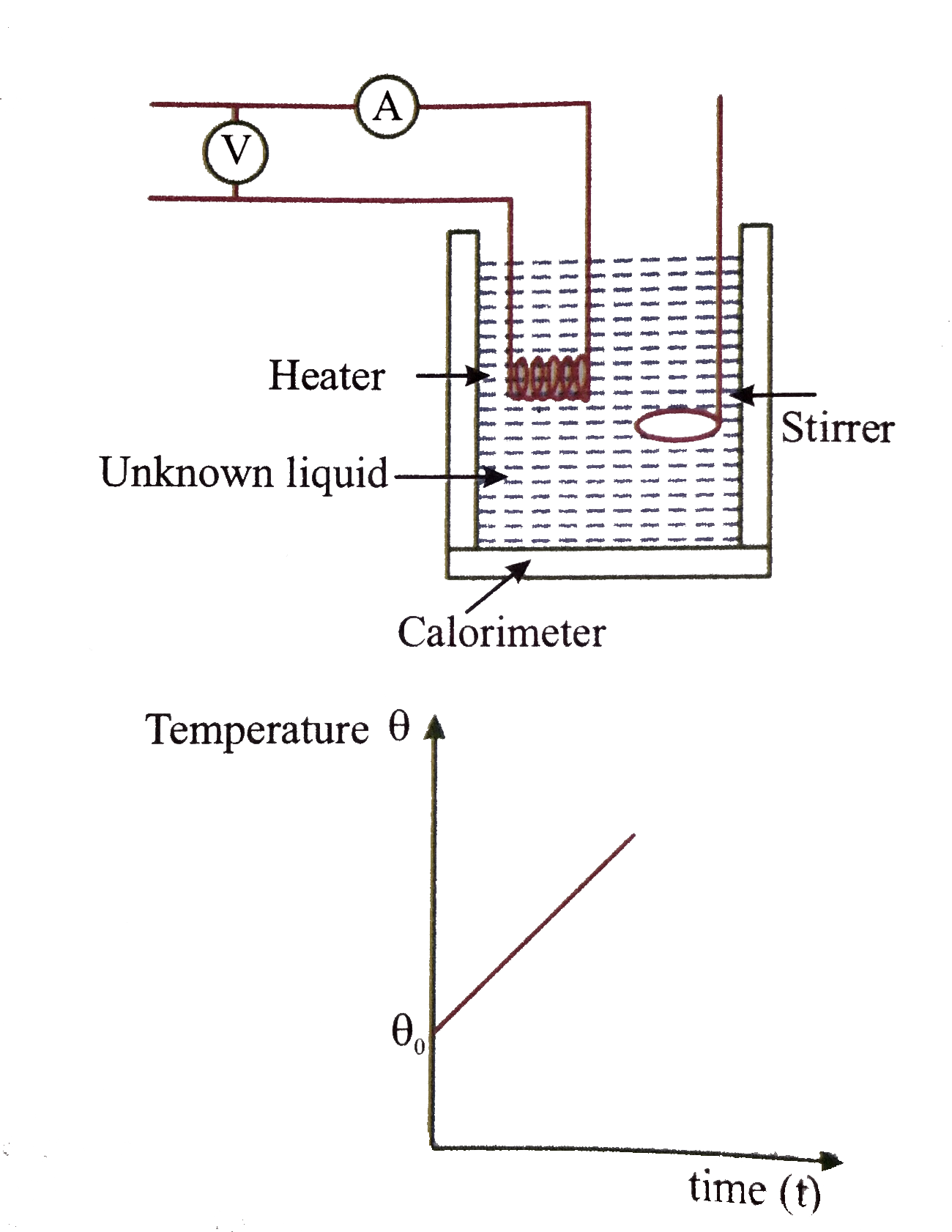
Radiation correction: There can be heat loss to environment. To compensate this loss, a correction is introduced.
Let the heater was on for tsec, and then it is switched off. Now the temperature of the mixture falls due to heat loss to environment. The temperature of the mixture is measured t/2sec. after switching off. Let the fall in temperature during this time is ɛ
Now the corrected final temperature is taken as θf=θf+ɛ
If mass and specific heat capacity of calorimeter is negligible, what would be maximum permissible error in Sl. Use the date mentioned below.
m1→, Sl→0, m2=1.00kg,
V=10.0V, I=10.0A,
t=1.00×102sec, θ0=15∘C,
Corrected θ1=65∘CA4%B5%C8%D12% - Question 1 - Select One
Figure shows an electrical calorimeter to determine specific heat capacity of an unknown liquid, First of all, the mass of empty calorimeter (a copper container) is measured and suppose it is m1. Then the unknown liquid is poured in it. Now the combined mass of calorimeter+liquid system is measured and let it be m2. So the mass of liquid is (m2−m1). Initially both were at room temperature (θ0).
Now a heater is immeresed in if for time interval t. The voltage drop across the heater is V and current passing through it is I. Due to heat supplied, the temperature of both the liquid and calorimeter will rise simultaneously. After tsec, heater was switched off, and final temperature is θr. If there is no heat loss to surroundings. Heat supplied by the heater=Heat absorbed by the liquid+heat absorbed by the calorimeter (VI)t=(m2−m1)S1(θf−θ0)+m1Sc(θf−θ0)
The specific heat of the liquid S1=(VI)tθf−θ0−m1Sc(m2−m1)
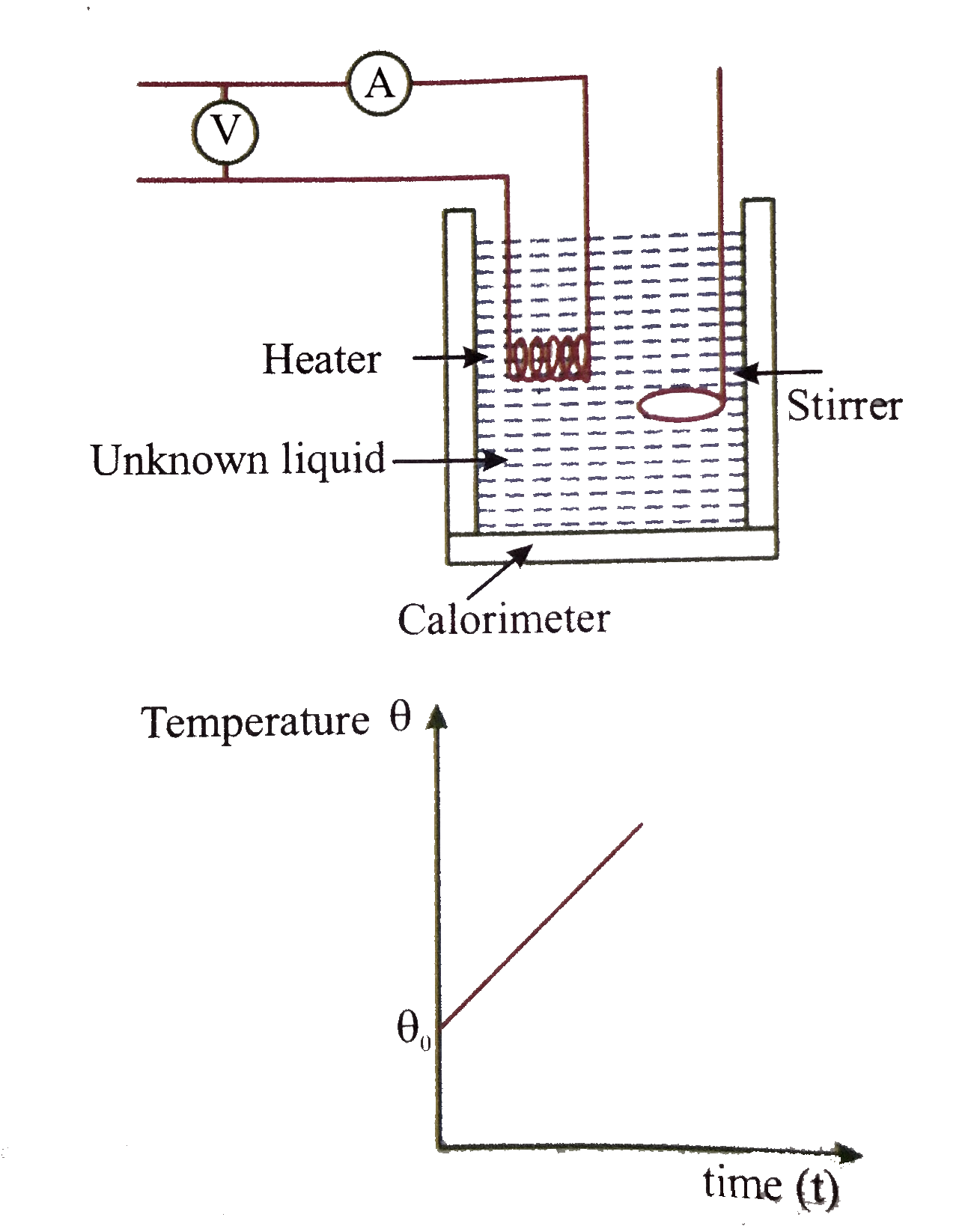
Radiation correction: There can be heat loss to environment. To compensate this loss, a correction is introduced.
Let the heater was on for tsec, and then it is switched off. Now the temperature of the mixture falls due to heat loss to environment. The temperature of the mixture is measured t/2sec. after switching off. Let the fall in temperature during this time is ɛ
Now the corrected final temperature is taken as θf=θf+ɛ
If the system were losing heat according to Newton's cooling law, the temperature of the mixture would change with time according to (while heater was on)A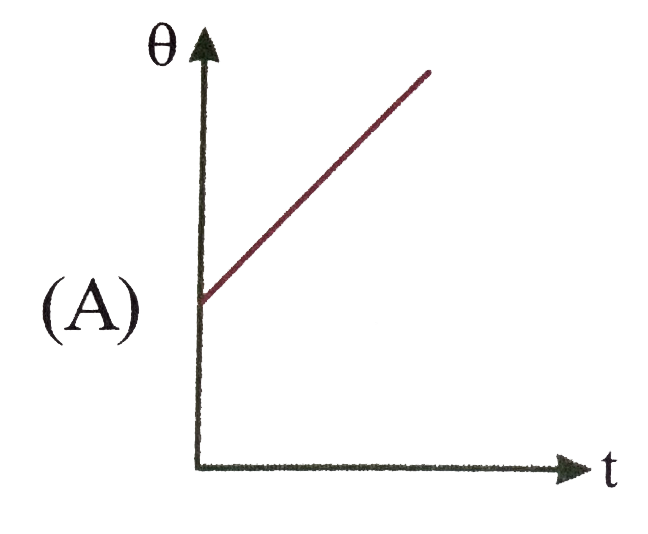 B
B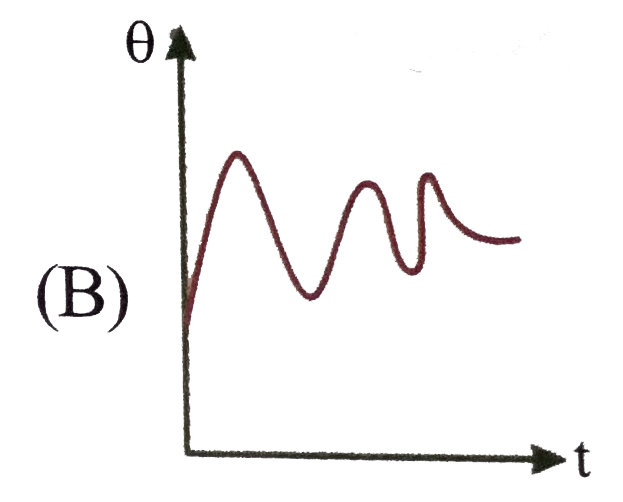 C
C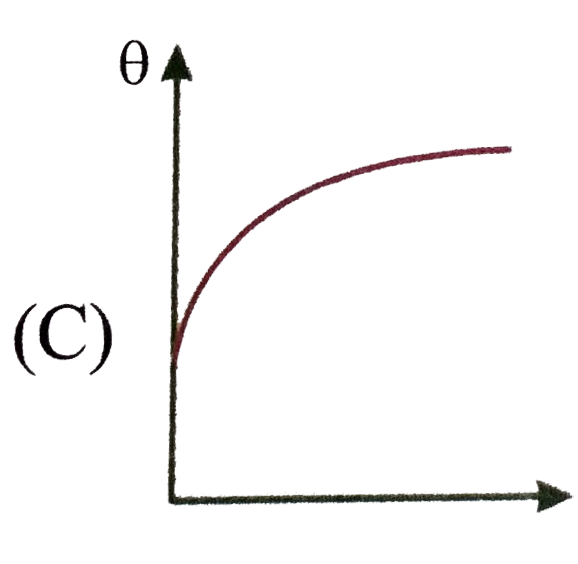 D
D
- Question 1 - Select One
Most substances contract on freezing . However, water does not belong to this category. We know that water expands on freezing. Further , coefficient of volume expansion of water in the temperature range from 0∘C to 4∘C is negative and above 4∘C it is positive . This behaviour of water shapes the freezing of lakes as the atmospheric temperature goes down and it is still above 4∘C.
As the atmospheric temperature goes below 4∘CACooled water at the surface flows downward because of its greater densityBCooled water at the surface does not flow downward and remains at the surface because its smaller densityCCooled water at the surface downward because of its densityDTemperature of water in the lake reduces with depth
Similar Questions
Water at 20∘C is flowing in a horizontal pipe that is 20.0m long.The flow is laminar and the water completely fills the pipe. A pump maintains a gauge pressure of 1400Pa, at a large tank at one end of the pipe. The other end of the pipe is open to the air, The viscosity of water at 20∘C is 1.005 poise
(a) If the pipe has diameter 8.0cm, what is the volume flow rate?
(b) What gauge pressure must the pump provide to achieve the same volume flow rate for a pipe with a diameter of 4.0cm?
(c) For pipe in part (a) and the same gauge pressure maintained by the pump, what does the volume flow rate become if the water is at a temperature of 60∘C (the viscosity of water at 60∘C is 0.469 poise?View SolutionThe table given below shows the temperatures recorded on a day at different times.

Observe the table and answer the following questions.
(a) What is the temperature at 8 am?
(b) At what time is the temperature 3∘C?
(c) During which hour did the temperature fall?
(d) What is the change in temperature between 7 am and 10 am?
(e) During which hour was there a constant temperature?View SolutionA rectangular steel tank of thickness 2.5 cm is used to boil water by a constant temperature furnace. If the level of water inside the tank falls at a steady rate of 0.25 cm in 2 minutes due to vaporisation, find the temperature of the furnace.
Take, conductivity of steel =0.2cals−1m−1∘C−1
Latent heat of steam = 540 cal/gView Solution

